Welcome to my blog post all about creating amazing rooms for kids! Designing a kid’s room is not just about making it look cool; it’s also about making it a fun and safe place for your little ones. Whether you have a baby, a toddler, or a growing child, I’ve got some awesome ideas to help you create a space that they’ll absolutely love. From choosing colors and furniture to adding cool decorations and organizing toys, I’ll walk you through it all. So, if you’re ready to embark on this creative journey, let’s dive into the wonderful world of kids’ room design!
Age-Appropriate Design
Creating a kid’s room that truly resonates with them begins with understanding the importance of age-appropriate design. It’s all about tailoring the room’s layout, decor, and functionality to suit the specific needs and interests of the child at their current age. For instance, a toddler’s room will prioritize safety and simplicity, with features like low-to-the-ground beds and soft corners. On the other hand, a teenager’s space may need to accommodate study areas, storage for a growing wardrobe and a space for self-expression. By considering the child’s developmental stage and individual preferences, you can craft a room that not only looks great but also serves as a functional and comforting sanctuary for them to grow, learn, and play in.
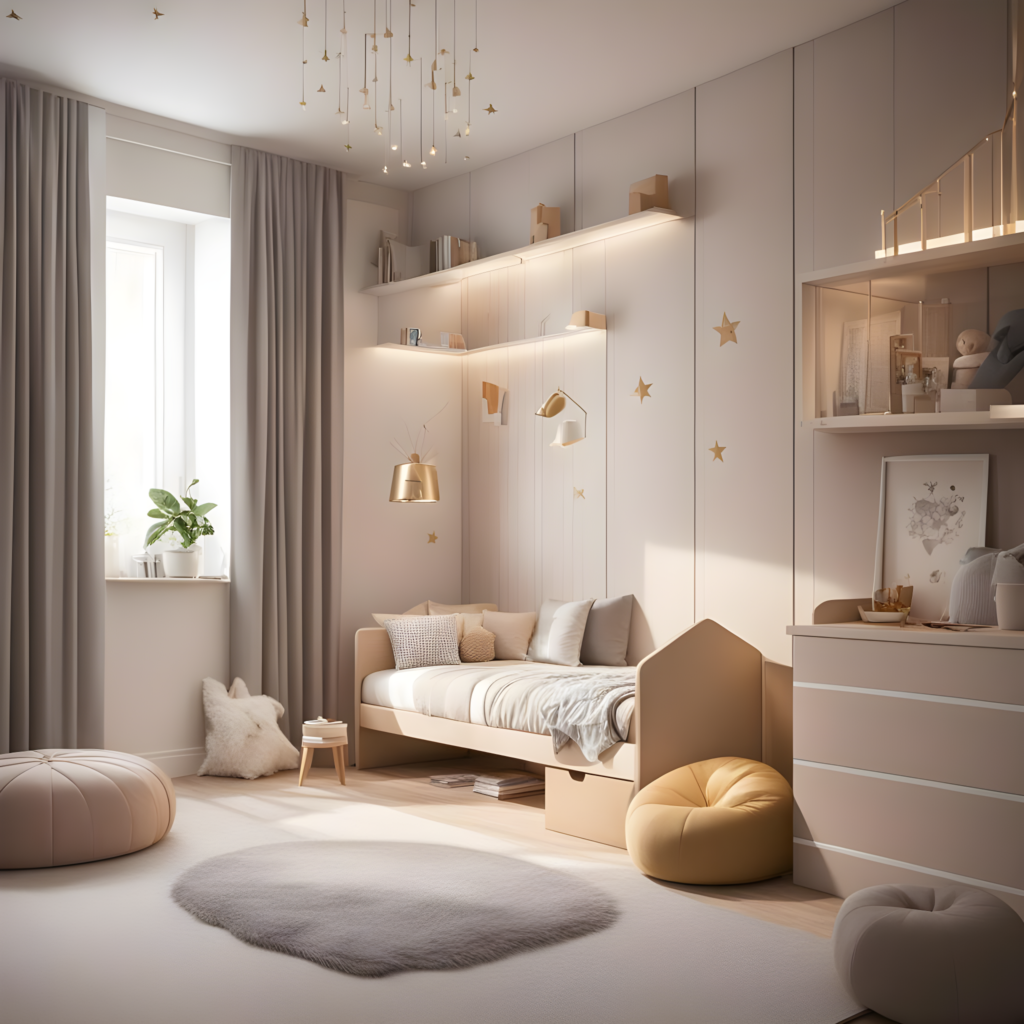
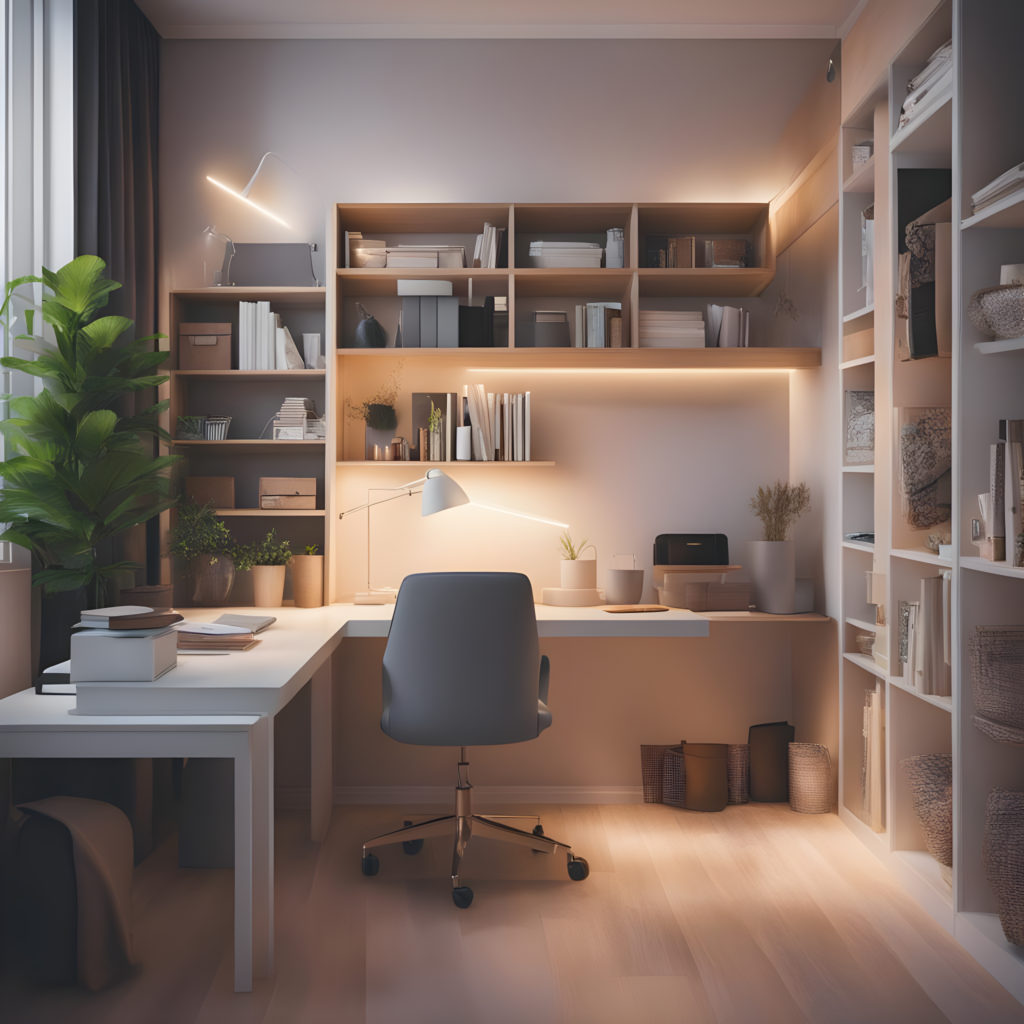
Themes and Decor
When it comes to designing kids’ rooms, themes and decor play a significant role in creating an engaging and imaginative environment. Themes can ignite a child’s creativity and make their space feel truly special.
First thing first, choose a Theme. Start by exploring popular themes that align with your child’s interests. Themes could revolve around space, dinosaurs, princesses, superheroes, animals, under-the-sea adventures, sports, or even favorite movie characters. The key is to select a theme that resonates with your child’s passions and preferences.
Then, incorporate some decor elements that bring the theme to life. This can include wall decals and murals (Use removable wall decals or murals featuring theme-related images to create a captivating backdrop for the room), bedding and linens, curtains, furniture (like a canopy bed or a castle-shaped bookshelf), decorative accents (such as rugs, throw pillows, and wall art), and also DIY projects to personalize the room further. For instance, you could create custom artwork or crafts with your child that fit the theme.
Keep in mind that children’s interests can change quickly as they grow! To make the room adaptable, consider decor elements that can be easily updated or replaced without a major overhaul. This allows you to evolve the room’s theme as your child’s tastes mature.
Encourage your child’s input when selecting the theme and decor elements. Their involvement can make the room feel more like their own special space. Plus, personal touches like framed artwork or photos of their own creations can enhance the room’s uniqueness.
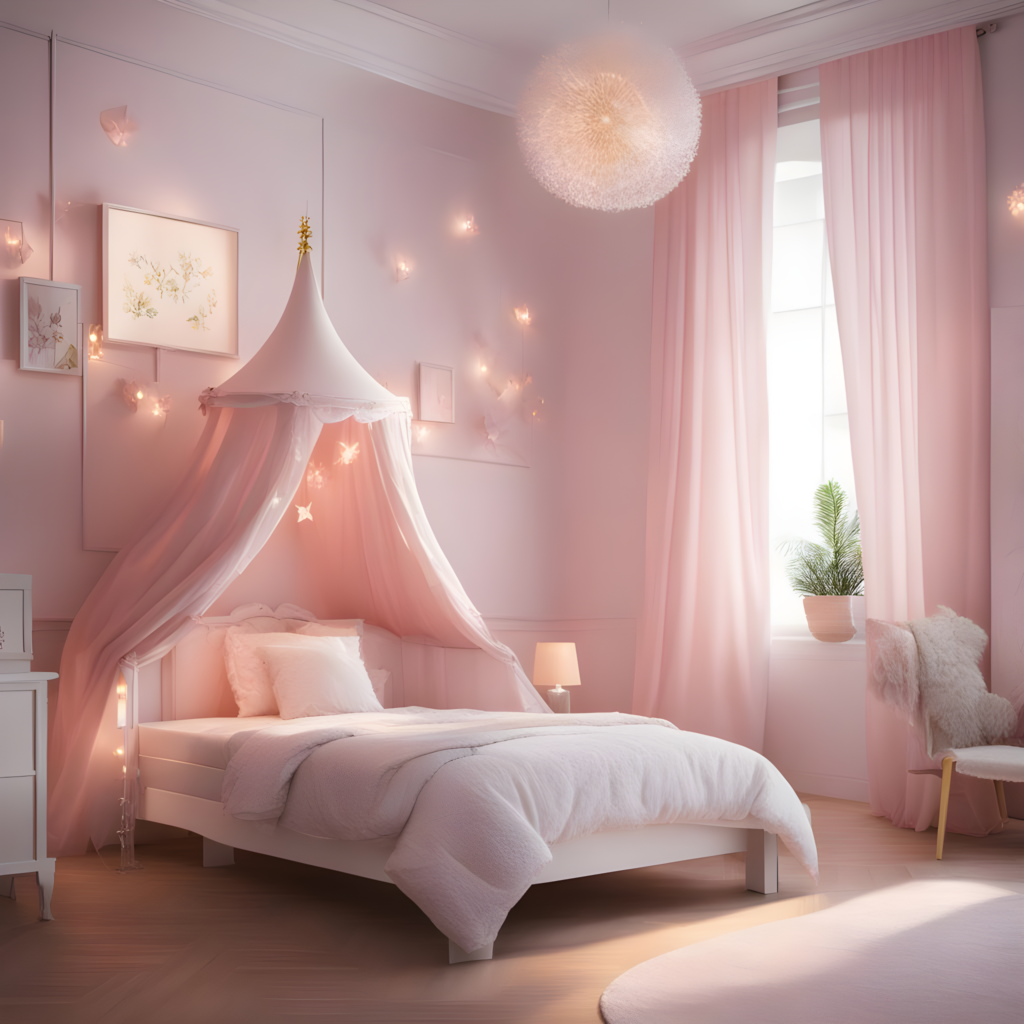
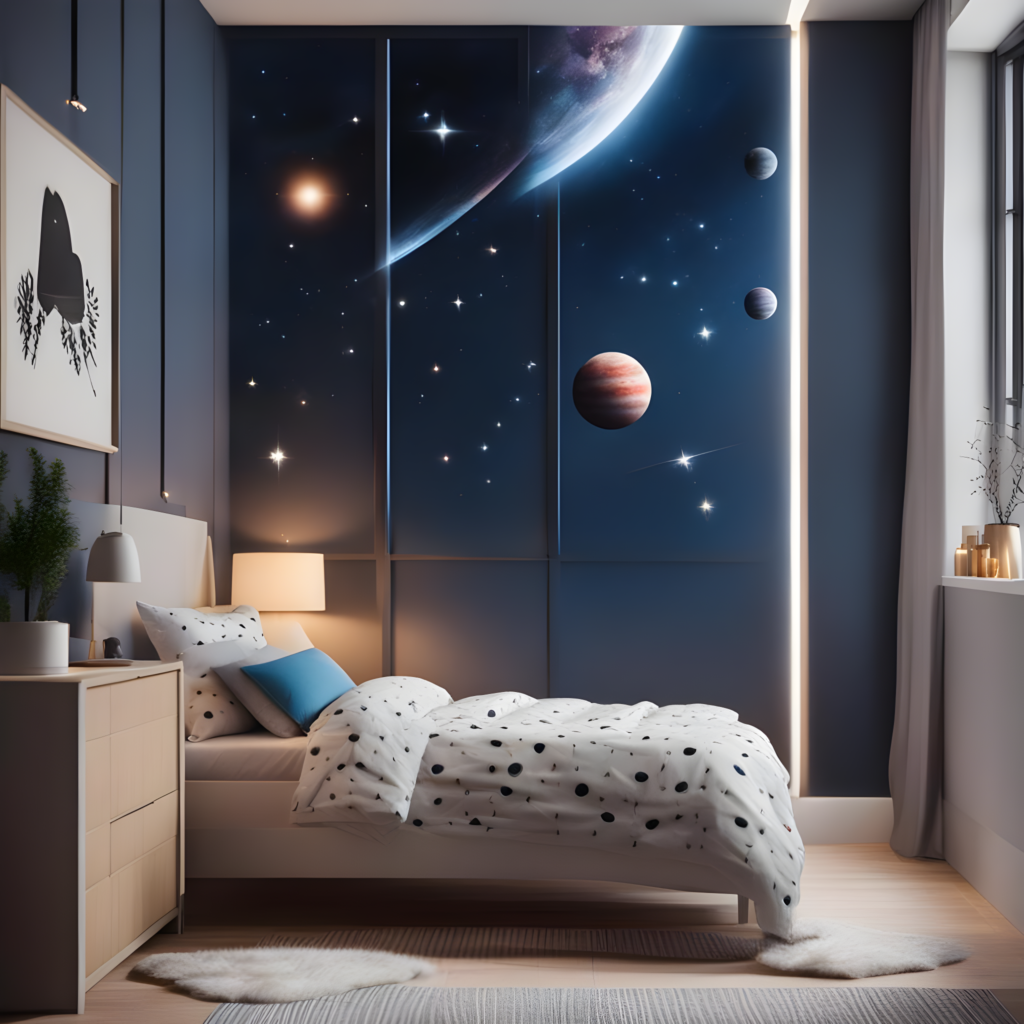
Color Palettes
Selecting the right color palette for a child’s room promotes comfort, creativity, and a positive mood. Here’s a deeper look into the impact of colors and age-appropriate color palettes.
Understanding Color Psychology
Colors have a significant influence on our emotions and can affect a child’s mood and behavior. For instance, blue is often associated with calmness and tranquility. It’s an excellent choice for bedrooms as it can promote relaxation and sleep. Green is known for its soothing and refreshing qualities. It can create a sense of harmony and connection with nature. Yellow is cheerful and energizing, making it a great choice for playrooms or areas where creativity and activity are encouraged. Pink is often associated with softness and nurturing, pink can be calming and comforting. Red is vibrant and can stimulate energy and excitement. However, it should be used in moderation, as it can be overwhelming.
Age-Appropriate Color Palettes
- Nursery (Infants and Toddlers): For babies, soft and soothing colors like pastel blues, greens, yellows, or gentle shades of pink can create a tranquil environment. Avoid overly bright or stimulating colors. As children grow into toddlers, you can gradually introduce more vibrant hues.
- Preschool and Early School Age: This stage often welcomes more colorful and playful themes. Consider using a combination of cheerful and gender-neutral colors like primary colors (red, blue, yellow), as they promote creativity and learning. Pastels or light neutrals can still be used as background colors.
- Middle Childhood: As children become more independent, involve them in color choices. Encourage their preferences while keeping the overall palette balanced. You might incorporate their favorite colors as accents within a neutral or complementary scheme.
- Teenagers: Older children often have stronger preferences. Work with them to choose colors that reflect their personality and interests. Neutral base colors can be paired with bolder accent shades to create a more mature look.
Gender-Neutral Options
In shared rooms or to avoid reinforcing gender stereotypes, opt for gender-neutral color palettes. These typically include shades of green, yellow, gray, and various shades of blue. Earthy tones like beige and taupe also work well. Neutral colors can provide a versatile canvas for different decor themes and can adapt as children grow and their tastes change.
When selecting a color palette for a child’s room, it’s essential to strike a balance between aesthetics, mood, and practicality. Additionally, consider using paints with low or no volatile organic compounds (VOCs) to ensure a healthy and safe environment. Ultimately, the chosen colors should reflect the child’s personality, nurture their well-being, and create a space they’ll love spending time in.

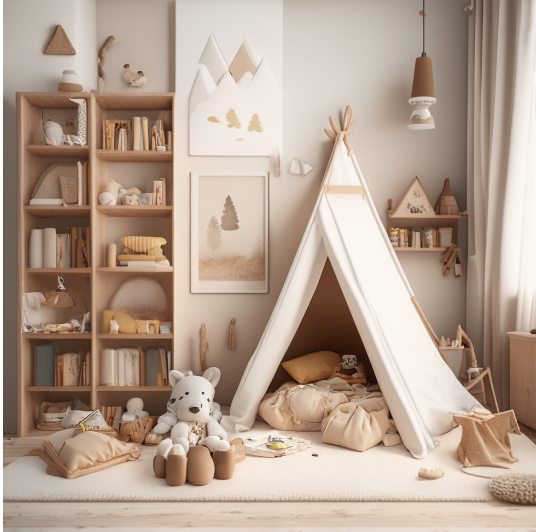
Furniture Selection
Selecting the right furniture for a child’s room involves a combination of functionality, safety, and age-appropriateness. Here’s a closer look at furniture selection for kids’ rooms:
Cribs and Beds
For infants, a crib is the safest sleeping option. Look for one that meets safety standards, has adjustable mattress heights, and sturdy rails. Convertible cribs that can later transform into toddler beds are a smart investment. Toddler beds should have guardrails to prevent falls.
Transition to a twin or full-sized bed as your child grows. Consider a bed with built-in storage drawers for added functionality. Safety is still crucial, so ensure guardrails are used if needed.
Desks
As children start school, a desk becomes essential for studying and homework. Choose a desk that provides ample workspace and storage for school supplies. Ergonomics are vital; the desk and chair should be comfortable and adjustable to support good posture.
Storage Solutions
Invest in toy chests, bins, or shelves to keep toys organized. Wall-mounted shelves or bookcases can be great for displaying books and decorative items.
Dressers with drawers are ideal for clothing storage. Ensure they are stable and have anti-tip mechanisms to prevent accidents.
Look for furniture pieces that serve dual purposes, like bunk beds with built-in desks or loft beds with storage and a play area underneath.
Ergonomic Seating
Provide an ergonomic desk chair that can be adjusted to your child’s height. Proper support is essential for long study sessions.
Safety Considerations
Secure heavy furniture like dressers and bookshelves to the wall to prevent tipping.
Use safety plugs for electrical outlets, and keep cords and blinds out of reach. Choose furniture with rounded edges to minimize injury risks. Opt for furniture made from non-toxic, low-VOC materials to promote a healthy indoor environment. Ensure that cribs, bunk beds, and other children’s furniture meet safety standards, and look for relevant certifications.
Personalization
Let your child have a say in the choice of furniture, especially as they get older. Personalized spaces tend to be more inviting and comfortable.
Growth Considerations
Choose furniture that can adapt as your child grows. Convertible cribs, adjustable-height desks, and expandable beds are excellent choices to extend the lifespan of furniture pieces.
Designing a kid’s room is a delightful journey of creativity, love, and consideration. It’s about creating a space where your child can not only rest but also explore, learn, and play freely. From age-appropriate design that evolves with your child’s growth to imaginative themes and decor that ignite their creativity, you have the opportunity to craft a room that nurtures their individuality. With these ideas and tips, your child’s room can become a haven where they feel loved, inspired, and free to be themselves. So, embrace the journey of designing a space that will witness countless dreams, adventures, and moments of joy throughout your child’s growing years. Happy designing!
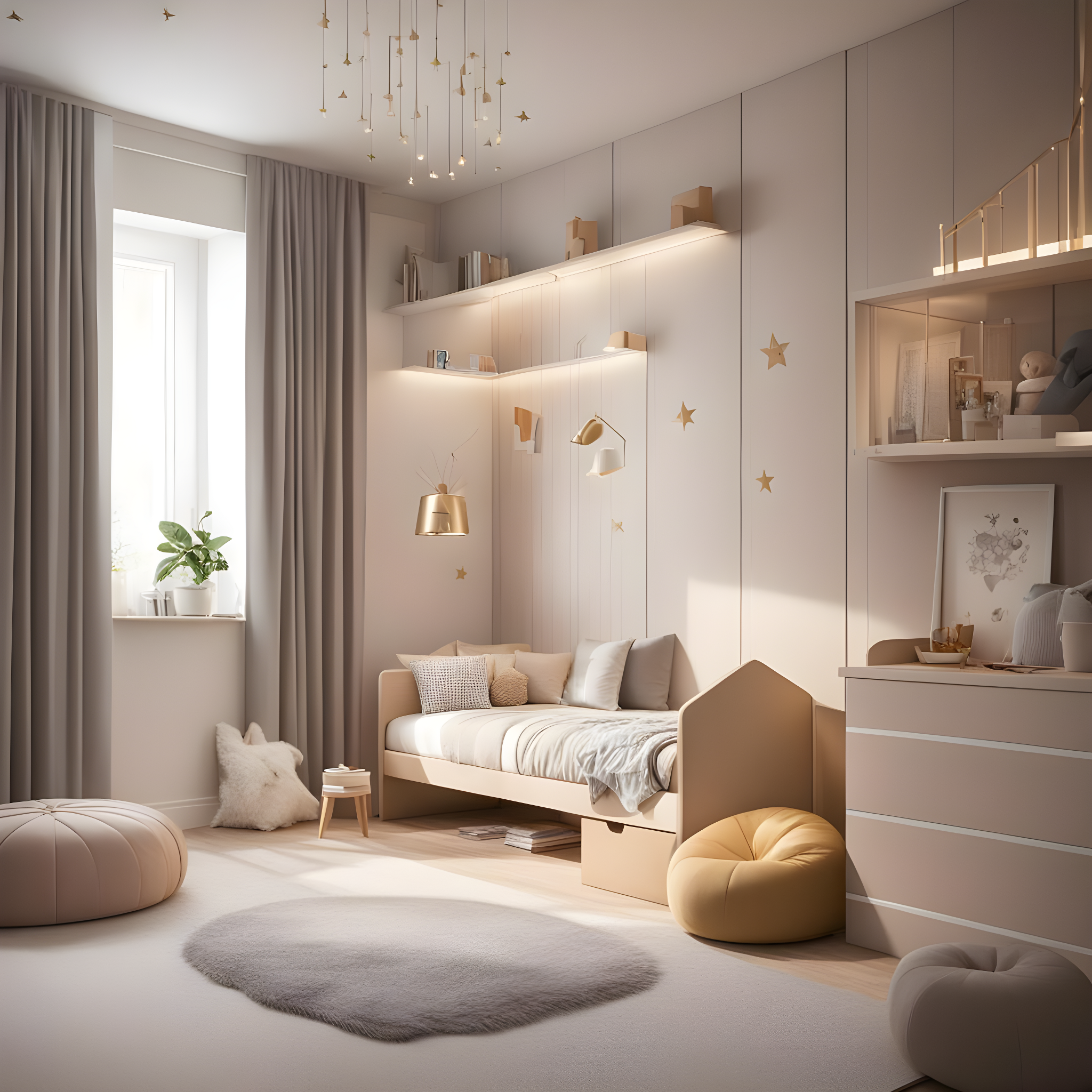
Leave a Reply